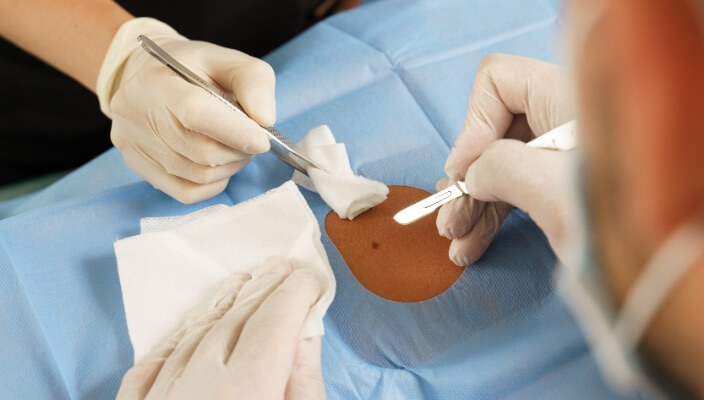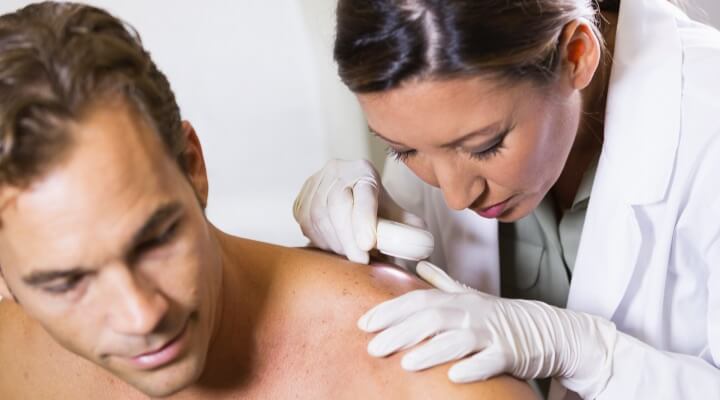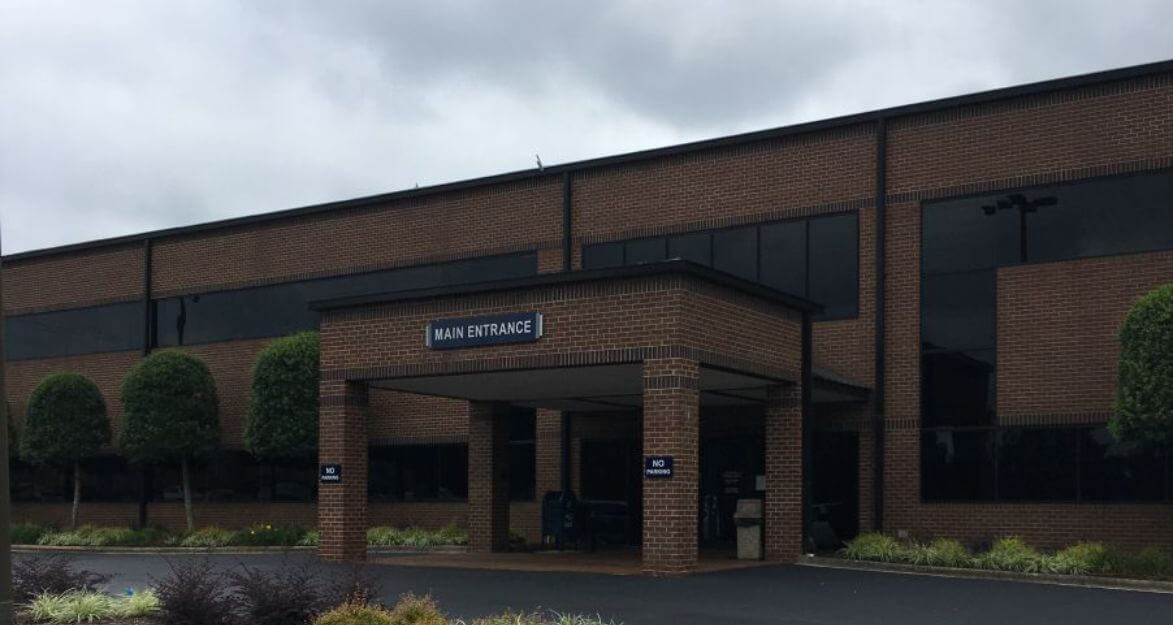How Mohs Surgery Helps Preserve Healthy Tissue in Skin Cancer Treatment
The Role of Mohs Surgery in Skin Cancer Treatment
 In the battle against skin cancer, protecting as much healthy tissue as possible is a paramount concern. Mohs surgery offers a precise and tissue-sparing approach often resulting in superior cosmetic and functional outcomes. This article will delve into the benefits of choosing Mohs Surgery at The Skin Surgery Center, providing a detailed explanation of the procedure and what to expect during recovery. Readers will learn how this method not only excels in removing cancerous cells but also minimizes damage to surrounding healthy tissue. If you're considering treatment options, understanding the advantages of Mohs surgery and how to prepare for your experience, this content will guide you. For those ready to take the next step towards optimal care, scheduling an appointment with The Skin Surgery Center is seamless.
In the battle against skin cancer, protecting as much healthy tissue as possible is a paramount concern. Mohs surgery offers a precise and tissue-sparing approach often resulting in superior cosmetic and functional outcomes. This article will delve into the benefits of choosing Mohs Surgery at The Skin Surgery Center, providing a detailed explanation of the procedure and what to expect during recovery. Readers will learn how this method not only excels in removing cancerous cells but also minimizes damage to surrounding healthy tissue. If you're considering treatment options, understanding the advantages of Mohs surgery and how to prepare for your experience, this content will guide you. For those ready to take the next step towards optimal care, scheduling an appointment with The Skin Surgery Center is seamless.
Understanding Skin Cancer and Its Effects on Your Health
When it comes to skin health, carcinoma poses a significant threat. These cancerous cells, once formed, can undermine the integrity of skin tissue, manifesting as lesions or growths on the surface. Skin cancer, therefore, necessitates prompt and effective treatment to prevent tissue damage and mitigate the spread of the disease. It is important to schedule an appointment for an evaluation if you notice any concerning changes on your skin.
Mohs Surgery emerges as a pivotal strategy in addressing skin cancer. This procedure not only focuses on removing the carcinoma tissues but also on preserving as much healthy tissue as possible. Thus, the surgical approach balances the meticulous eradication of cancer cells with the objective to minimize scarring and maintain the functionality and appearance of the skin.
The impact of skin cancer on a person's health can extend beyond the physical manifestations:
- There's the immediate threat of the carcinoma spreading to other body parts.
- The potential psychological effects accompanied by the altered appearance post-surgery.
- Long-term health complications if the cancer is not removed adequately.
Mohs surgery is distinguished from other treatments by its precision. By examining tissues during surgery, this technique ensures complete carcinoma removal while safeguarding surrounding healthy skin, thereby reducing the likelihood of recurrence and offering patients confidence in their treatment outcomes.
Introducing Mohs Surgery: A Tissue-Preserving Solution
Mohs surgery stands as a specialized treatment for patients with skin cancer, offering a distinct advantage over traditional excisional surgery. By precisely excising cancerous tissue layer by layer, this procedure conserves as much healthy tissue as possible, effectively minimizing the wound without compromising on the complete removal of the carcinoma, including melanoma. Following sections will delve into the workings of Mohs surgery, illuminating its advantages for patients and showcasing why it is considered the gold standard in skin cancer treatment.
How Mohs Surgery Works
Mohs surgery, a procedure endorsed by the American Academy of Dermatology, commences with the surgeon excising the visible neoplasm along with a thin layer of surrounding tissue. This initial removal is integral to the therapy, setting the stage for a meticulous histological examination to ensure that cancer margins are completely clear: an essential step in the process.
Following the excision, the surgeon examines the extracted tissue through histology, detecting any residual cancerous cells. Should the surgeon identify remaining neoplasm, they remove additional layers, but solely where the cancer persists. This targeted approach maximizes tissue conservation and the functionality of the therapy, leading to optimal patient outcomes and minimal scarring.
Advantages Over Traditional Excisional Surgery
Compared to traditional excisional surgery, Mohs surgery offers a significant advantage in preserving healthy tissue. By employing a step-by-step approach under local anesthesia, the physician can target only the diseased cells. Utilizing a microscope in real-time, the precise nature of the pathology work in Mohs surgery results in a higher degree of accuracy and, consequently, a reduced need for larger, more invasive excisions.
This technique is especially beneficial for treating aggressive skin cancers like dermatofibrosarcoma protuberans, where tissue conservation is of the utmost importance. The physician's ability to visually confirm the complete removal of cancerous cells via microscopic examination minimizes the risk of recurrence and preserves the patient's skin integrity to a remarkable degree:
- Microscopic review minimizes the risk of leaving behind cancerous cells.
- Localized anesthesia reduces overall patient risk and discomfort.
- The technique is highly effective even for complex cancers such as dermatofibrosarcoma protuberans.
Benefits of Mohs Surgery at the Skin Surgery Center
At the Skin Surgery Center, specialized Mohs surgeons employ state-of-the-art surgical techniques to treat various skin cancers, including sebaceous carcinoma. This subsection will discuss the expertise inherent in dermatology and the precision of plastic surgery that contributes to effective cancer treatment, while managing pain and optimizing patient outcomes. The following insights will underscore the unparalleled benefits that Mohs surgery offers, demonstrating its role as a key component in the preservation of healthy tissue.
Expertise of Specialized Mohs Surgeons
The specialized Mohs surgeons at the Skin Surgery Center exemplify the highest standards of precision when treating malignancies such as microcystic adnexal carcinoma and merkel cell carcinoma. Their adept use of local anesthetic minimizes patient discomfort and bleeding, ensuring a controlled and compassionate surgical environment.
These surgeons are not only skilled in excising cancerous tissue but also excel at discerning healthy skin to preserve. The surgical acumen they wield is demonstrative of their prominent role in advancing patient outcomes, allowing individuals to resume daily life with confidence after successful treatment.
State-of-the-Art Surgical Techniques
The Skin Surgery Center leverages advanced surgical techniques to provide public health benefits, particularly in the treatment of skin cancer. These methods include precise biopsy procedures that ensure only affected tissues are targeted, sparing a maximum amount of healthy skin and reducing the need for extensive skin grafting. This specialized approach not only curtails disease progression but also supports faster recovery, maintaining the aesthetic quality of sensitive areas such as the ear.
Utilizing cutting-edge technology, surgeons conduct real-time analysis during Mohs surgery to identify and remove cancerous cells with extraordinary accuracy. This reduces the necessity for additional surgery, underscoring the commitment to minimize health risks and discomfort for patients. Through this meticulous surgical practice, the Skin Surgery Center enhances disease management and helps patients achieve optimal health outcomes with minimal intervention.
The Mohs Surgery Procedure: Step-by-Step Guide
As patients embark on the journey to cure skin cancer, Mohs surgery stands at the forefront, meticulously preserving healthy tissue. In the steps to follow, consultation and preparation are vital, laying the groundwork for the surgical process. This surgical narrative includes staining tissues to visualize cancer cells, applying oncological principles to remove the malignancy, and fostering wound healing. The forthcoming content communicates how medication may be used adjunctively, the typical duration of the procedure, and the expectations during surgery. With skilled precision, Mohs surgery is executed effectively to promote the best possible outcomes for patients.
Consultation and Preparation
Prior to Mohs surgery, a meticulous consultation is imperative to chart the optimal course of treatment, one that may involve radiation therapy or reconstructive surgery depending on the cancer's location, such as the scalp. This preliminary discussion not only equips the patient with a comprehensive understanding of the procedure but also addresses any concerns regarding surgical oncology and the potential for infection.
During the preparation phase, patients are educated about the steps of Mohs surgery, and they receive detailed guidance on how to prepare their skin for the procedure. The Skin Surgery Center prioritizes patient education to minimize the risk of infection and to ensure the best possible outcomes, reinforcing the center's commitment to conserving healthy tissue while excising the carcinoma.
The Surgical Process Explained
During Mohs surgery, the surgeon first numbs the target area, commonly found around sensitive regions like the neck or eyelid, with local anesthesia. The procedure commences with the careful removal of the visible carcinoma in situ, layer by layer, each excision followed by immediate histopathology. This intricate assessment reduces the risk of unnecessary removal of healthy tissue and ensures that only the affected area undergoes treatment.
Following each excision, the tissue is meticulously examined using histopathology to detect any remaining cancerous cells. This step is crucial, particularly when operating near critical areas such as the eyelids, where preserving functional and aesthetic integrity is paramount. It diminishes the risk that undetected carcinoma poses to the patient's health by allowing for on-the-spot adjustments to the surgical plan. This targeted, real-time analysis ensures complete cancer removal while conserving as much healthy tissue as possible.
Duration and What to Expect During Surgery
The duration of Mohs surgery can vary depending on the extent of the carcinoma and whether additional layers of tissue must be removed. Surgeons following appropriate use criteria work diligently to maintain a precise balance between thorough carcinoma extraction and conservation of healthy tissue. Patients can typically expect the procedure to last several hours, as each layer excised is meticulously examined using toluidine blue staining to delineate cancerous cells accurately.
Throughout the procedure, the surgical team ensures meticulous care to preserve nerve function and minimize the risk of metastasis. Should a larger defect arise once the carcinoma is excised, a carefully designed flap may be created to optimize cosmetic and functional outcomes. Patients can rest assured that steps are taken during surgery to prioritize their health and the integrity of surrounding tissue, making the course of treatment as comfortable and effective as possible.
Preparing for Your Mohs Surgery Experience
Embarking on Mohs surgery necessitates certain pre-surgery guidelines to safeguard patients' health and maximize the preservation of healthy tissue. This careful preparation is particularly crucial for conditions like lentigo maligna, where the precision of scalpel and cryostat use is pivotal. Patients must comprehend the significance of discussing medication use, such as anticoagulants, with their surgeon and the possible need for tissue reconstruction, which may involve a free flap procedure. The forthcoming sections will furnish patients with essential preparatory instructions and underscore the importance of informed dialogue with their healthcare provider.
Pre-Surgery Guidelines for Patients
In the preparatory stage before Mohs surgery, patients are advised to follow tailored guidelines to optimize their safety and surgical results. These include ceasing certain medications, as recommended by the Mayo Clinic, that may interfere with the procedure's results or patient healing. Patients should also discuss with their surgeon the specific use of medicine, including over-the-counter drugs, to avoid complications during the meticulous process of immunohistochemistry used to distinguish cancer cells from healthy ones.
Another critical pre-surgery recommendation is the application of sunscreen on the treatment area if it will be exposed to the sun, as ultraviolet radiation can exacerbate the condition of skin pre-cancer treatment. The Skin Surgery Center emphasizes the importance of skin protection:
- Discontinue any medications that increase bleeding risks, following a physician’s advice.
- Apply broad-spectrum sunscreen to prevent further UV damage to the skin.
- Abstain from using products or undergoing procedures that might irritate the skin, such as laser treatments, in the weeks before surgery.
These measures assist in preserving the integrity of the skin for optimal Mohs surgery outcomes.
Questions to Discuss With Your Surgeon
In the initial consultation, discussing one's medical history with the surgeon is critical, including any previous reactions to local anesthesia. This information is indispensable, especially if the site of the skin cancer is near sensitive areas such as the lip, where precision is key to preserving both form and function. The surgeon uses this detailed medical background to tailor the dermatopathology to each patient, ensuring the Mohs procedure remains a minimally invasive and highly accurate treatment option.
Patients should also inquire about the specific steps of the Mohs surgery, allowing them to understand how the minimally invasive technique will be utilized to treat their condition. Questions may focus on the delineation of cancerous cells during the procedure, the application of local anesthesia to ensure comfort, and the post-surgical use of dermatopathology to confirm the thorough removal of cancerous tissue. Knowledge of these steps empowers patients, clarifying expectations and underscoring the surgeon's commitment to tissue preservation and patient well-being.
Recovery and Aftercare Following Mohs Surgery
Following the precise outpatient surgery of Mohs micrographical procedure, attentive post-operative care becomes vital. Maintaining the integrity of wound sites through careful management, including antibiotic application and observance of symptoms that might indicate an infection, is essential. Patients should schedule follow-up appointments to monitor the site for signs of eosin or other indications of the healing syndrome. These steps, examined in more detail in the sections below, are fundamental to optimizing recovery and upholding the benefits of tissue-preserving treatment.
Post-Operative Wound Care
After Mohs surgery, it is imperative to manage the surgical site with diligence to prevent infection and encourage proper healing. The application of zinc chloride may be prescribed by healthcare professionals as it aids in cauterizing small blood vessels, thus minimizing bleeding at the wound site. Patients on blood-thinning medications like warfarin must discuss post-operative care with their surgeon to adjust their medication regimen and avoid complications.
Moreover, complementary treatments such as electrodesiccation and curettage can be an adjunct to Mohs surgery, especially in cases where cancerous cells are superficial. These methods are evaluated continuously through clinical trials to ensure they offer benefits that align with the latest dermatological advancements. Close adherence to post-surgical instructions safeguards the patient's health and supports the preservation of the surrounding healthy tissue achieved by Mohs surgery.
Monitoring Healing and Preventing Infection
Postoperative vigilance is crucial in the healing phase following a Mohs surgery, particularly when managing lesions in hair-bearing areas that could be masquerading as keratoacanthoma. The clinic advises patients to observe the treated site for signs of infection, such as unusual redness or increased tenderness, which could compromise recovery. Prompt detection and treatment are essential to maintain the procedure's high tissue-conservation success rate.
Moreover, for lesions indicative of lentigo maligna melanoma, consistent monitoring after Mohs surgery aids in ensuring the thoroughness of the excision. Clinics underscore the importance of following all given aftercare instructions to support wound healing, emphasizing that any deviations might affect the cosmetic and functional outcomes achieved by the meticulous Mohs technique.
Scheduling Follow-Up Appointments
Scheduling follow-up appointments after Mohs surgery is a crucial step in the postoperative care process, providing health care professionals with the opportunity to ensure the wound is healing properly and to implement any necessary interventions. These follow-up visits allow the surgeon to monitor the surgical site for any signs of recurrence, affirming Mohs surgery's reputation as the gold standard in skin cancer treatment and healthy tissue preservation.
During these appointments, the surgeon may apply treatments such as zinc-based therapies to promote healing or evaluate the necessity for additional procedures like wide local excision if margins are not clear. The proactive review and fixation of the wound site during these follow-ups are indispensable to maintaining the optimal outcomes of Mohs surgery and ensuring the long-term health of the patient.
Schedule an Appointment with The Skin Surgery Center
Individuals concerned about keloid formation after skin cancer surgery may find solace in the precision of Mohs surgery offered by The Skin Surgery Center. The center's experienced surgeons prioritize the health of the skin and mitigate scarring, which reduces the likelihood of keloid development, a common concern among patients.
For those on aspirin therapy or other blood thinners, an appointment with The Skin Surgery Center provides an opportunity to discuss safe management strategies. The team is well-versed in coordinating care with preoperative injection techniques that minimize bleeding risks, ensuring a smoother surgical experience.
The guidance provided by The Skin Surgery Center also addresses concerns about cancer metastasis to organs and lymph nodes. Scheduling an appointment allows access to insights aligned with the American Cancer Society's standards for comprehensive skin cancer treatment and the preservation of healthy tissue:
- Expert evaluation of skin cancer's extent and depth to ensure precise excision
- Discussion on the importance of lymph node examination for advanced cases
- Enhanced recovery protocols to reduce the risk of cancer recurrence
The skilled team at The Skin Surgery Center is committed to offering a superior standard of care for skin cancer patients. By establishing an appointment today, patients take the first step towards a tailored, tissue-conserving treatment plan that leverages the latest Mohs surgery techniques under the guidance of qualified professionals.



